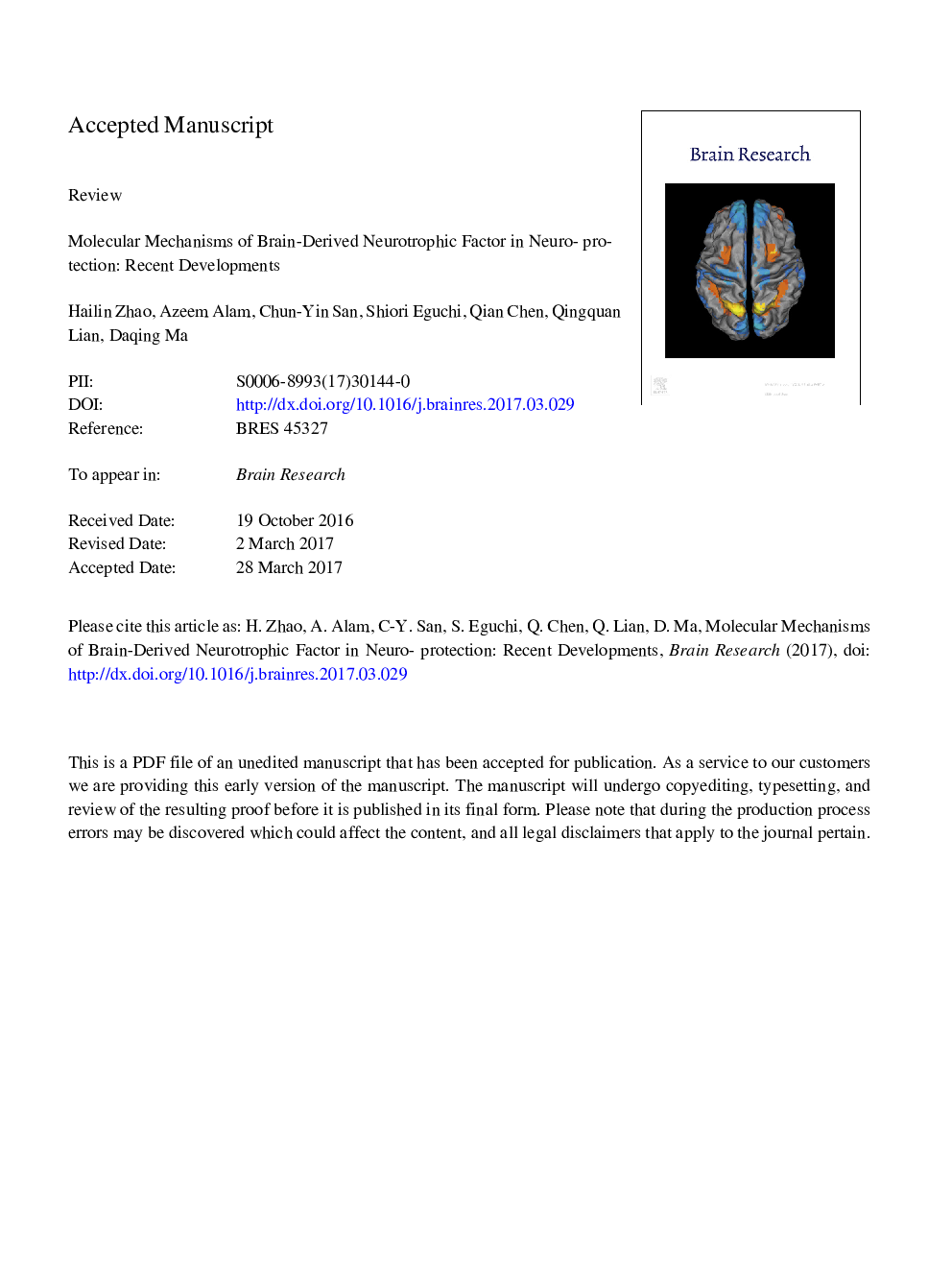| Article ID | Journal | Published Year | Pages | File Type |
|---|---|---|---|---|
| 5736789 | Brain Research | 2017 | 73 Pages |
Abstract
Neuronal cell injury, as a consequence of acute or chronic neurological trauma, is a significant cause of mortality around the world. On a molecular level, the condition is characterized by widespread cell death and poor regeneration, which can result in severe morbidity in survivors. Potential therapeutics are of major interest, with a promising candidate being brain-derived neurotrophic factor (BDNF), a ubiquitous agent in the brain which has been associated with neural development and may facilitate protective and regenerative effects following injury. This review summarizes the available information on the potential benefits of BDNF and the molecular mechanisms involved in several pathological conditions, including hypoxic brain injury, stroke, Alzheimer's disease and Parkinson's disease. It further explores the methods in which BDNF can be applied in clinical and therapeutic settings, and the potential challenges to overcome.
Keywords
CREBCa2+/calmodulin-dependent protein kinasesCa2+/CaMPKCNMDAERKAMPApKaCaMKcyclic AMPBDNFCa2+/calmodulincAMPinositol-1,4,5-trisphosphateIns(1,4,5)P3MAPKMAPK/ERK kinaseα-amino-3-hydroxy-5-methyl-4-isoxazolepropionic acid receptorbrain injurycAMP response element binding diacylglycerolDAGbrain derived neurotrophic factorBrain-derived neurotrophic factorMEKNeuroprotectionprotein kinase AProtein kinase Cmitogen-activated protein kinaseextracellular signal-regulated kinaseGab1N-methyl-d-aspartate receptor
Related Topics
Life Sciences
Neuroscience
Neuroscience (General)
Authors
Hailin Zhao, Azeem Alam, Chun-Yin San, Shiori Eguchi, Qian Chen, Qingquan Lian, Daqing Ma,
